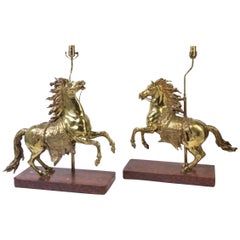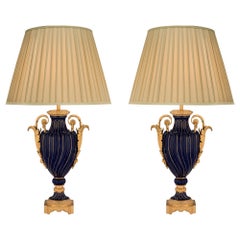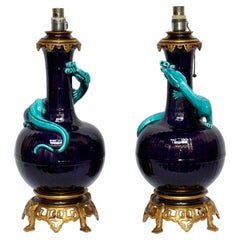Ormolu Table Lamps
19th Century French Antique Ormolu Table Lamps
Ormolu
Late 19th Century French Antique Ormolu Table Lamps
Ormolu, Bronze
1870s French Islamic Antique Ormolu Table Lamps
Ormolu
1870s French Chinoiserie Antique Ormolu Table Lamps
Ormolu
20th Century Ormolu Table Lamps
Bronze
19th Century French Antique Ormolu Table Lamps
Ormolu
Early 1900s French Louis XV Antique Ormolu Table Lamps
Ormolu, Bronze
19th Century French Romantic Antique Ormolu Table Lamps
Tôle
Late 19th Century French Neoclassical Antique Ormolu Table Lamps
Griotte Marble, Bronze
Mid-20th Century Chinese Export Ormolu Table Lamps
Celadon
21st Century and Contemporary Ormolu Table Lamps
Rock Crystal
19th Century French Louis XVI Antique Ormolu Table Lamps
1870s French Japonisme Antique Ormolu Table Lamps
Faience
Late 17th Century Dutch Chinoiserie Antique Ormolu Table Lamps
Faience
1880s French Antique Ormolu Table Lamps
Brass
20th Century Chinese Qing Ormolu Table Lamps
Porcelain
19th Century French Antique Ormolu Table Lamps
Ormolu
1870s French Chinoiserie Antique Ormolu Table Lamps
Bronze, Ormolu
1880s French Chinoiserie Antique Ormolu Table Lamps
Ormolu
1870s French Japonisme Antique Ormolu Table Lamps
Ormolu
Late 19th Century French Islamic Antique Ormolu Table Lamps
Ormolu
Antique Ormolu Table Lamps and Other Ormolu Lighting for Sale on 1stDibs
Able to double as task lighting, table lamps can illuminate darker corners of a room, and antique ormolu table lamps and other ormolu lighting can be incorporated into a variety of spaces.
Your style of decorating doesn't have to necessarily have to be rooted in neoclassical design in order to tastefully introduce ormolu — while demand for the material and/or technique was at its peak in Europe during the 18th and 19th centuries, ormolu table lamps, desk lamps and other ormolu furniture and decor are still widely loved by contemporary designers and collectors.
What is ormolu?
Ormolu is a brilliant form of decorative trickery. To the untrained eye, ormolu table lamps, clocks, jewelry boxes and other ormolu furniture and decor look like they're made of solid gold. But those in the know recognize ormolu — or elaborate bronze gilding — as having been essential to French design in the 18th and 19th centuries as a cornerstone of the neoclassical and Empire styles.
“Most commonly, ormolu refers to a bronze object that has been covered with gold, typically 18 karat or 24 karat,” explains Jamie Sinai, director of the antiques specialist Mayfair Gallery, in London. “For that reason, ormolu is sometimes called gilt bronze or, in French, bronze doré. Strictly speaking, however, the term ormolu also denotes the technique of applying gold to a metal.”
“The word comes from the French or moulu, which translates as ‘ground or powdered gold’ — the form the gold takes before it is applied to a metal surface.”
From the court of King Louis XVI to that of Napoleon I, the French elite snapped up furniture mounted with ormolu, as well as sconces, candelabra and table lamps made from the material.
If you're looking to bring a touch of this 19th-century pizzazz to your desk, an antique ormolu table lamp is a decorative touch that blends ornament and functionality. Perfect for lighting your nightstand or reading nook, table lamps play an integral role in styling an inviting room, and a well-crafted ormolu table lamp does more than provide light; the right fixture-and-table combination can add a focal point or creative element to any interior.
Today, antiques collectors and interior designers seek out the finest in ormolu clocks and continue to prize ormolu for its extraordinary craftsmanship and history-infused glamour.
“This wondrous material was highly sought after in France as the ultimate luxury. It magically resembled solid gold and sparkled under candlelight,” says Sinai.
Find antique ormolu table lamps, ormolu floor lamps and other ormolu lighting on 1stDibs.







